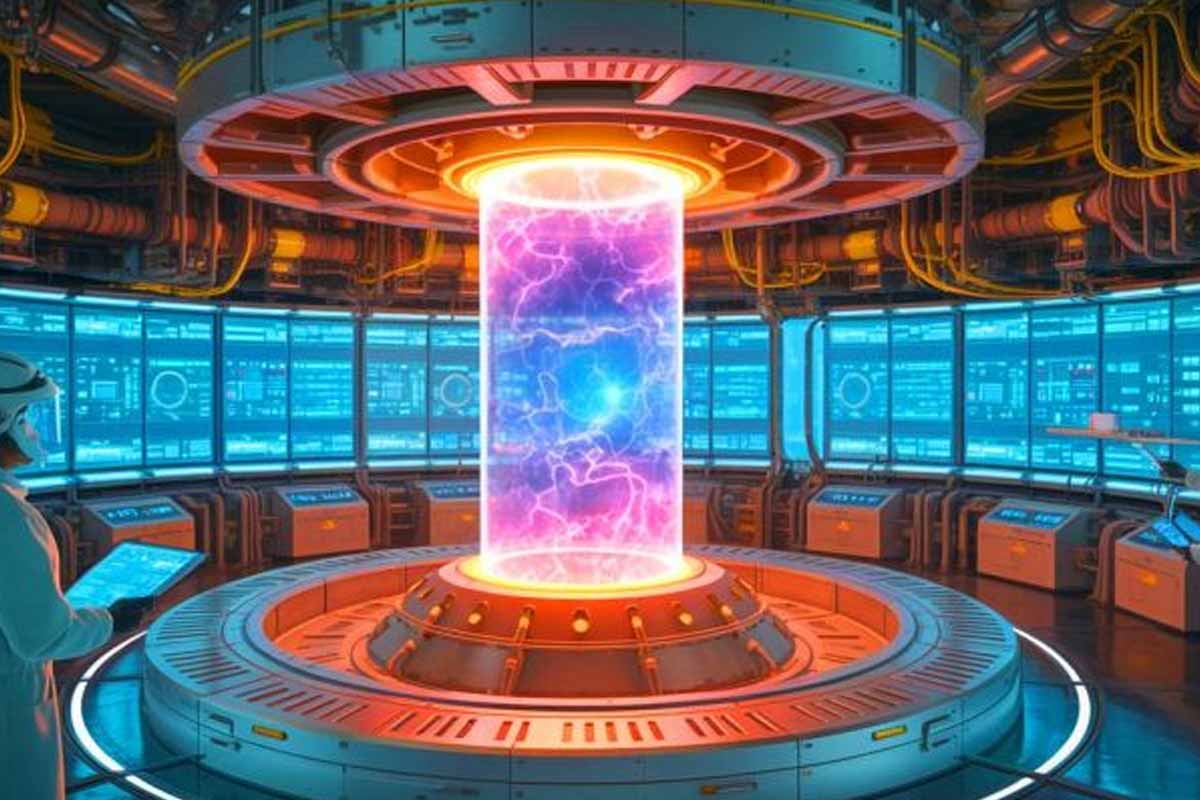Energy that burns like a star is no longer a distant dream; Thales is putting lasers to work. The group has launched GenF to aim at a compact, repeating fusion reaction that behaves like an artificial sun. With deep optics expertise, it wants pulses, targets, and controls to act in perfect rhythm. Because the goal is steady electricity, the plan links physics and engineering, so ideas translate into hardware, tests, and—eventually—machines. The path is bold, and the stakes are clear.
Foundations of laser fusion and Thales’ technical base
Inertial confinement fusion uses high-power lasers to compress tiny fuel targets until the atomic nuclei fuse, release energy, and produce bursts of plasma and neutrons. The controlled pulse repeats, and the cycle aims for net energy. This approach mirrors solar physics, yet it demands extreme precision and repeatability.
Thales brings four decades of laser leadership, including work on the French Atomic Energy Commission’s Laser Megajoule. That experience matters because multi-petawatt systems must deliver synchronized pulses, maintain beam quality, and survive harsh environments. Robust optics, adaptive controls, and metrology keep alignment stable while targets face cryogenic handling.
GenF packages this heritage into a dedicated company built for execution. The program sets scope, defines milestones, and binds teams to measurable performance. Because industrialization is the goal, engineers also plan manufacturable targets, serviceable chambers, and maintainable beamlines, so progress converts into machines that can run outside a lab.
From beamlines to ignition : building an artificial sun with light
Fusion starts when lasers compress a deuterium-tritium capsule to extreme density. The capsule must reach ignition before hydrodynamic instabilities spoil symmetry. So designers refine pulse shapes, lens coatings, and target geometry, while diagnostics track every microsecond to see whether compression and heating follow the model.
Because the aim is a power plant, the design loops link physics and operations. Engineers test materials for chamber walls and neutron flux, while they evaluate targets for cryogenic robustness and smooth layering. As models improve, teams tune timing, because only synchronized beams can drive the micro-explosion efficiently.
When those parts act together, the system behaves like an artificial sun, yet inside a chamber measured in meters. The yield must exceed input energy after accounting for laser efficiency and plant losses. Therefore, GenF treats laser efficiency, thermal recovery, and rapid target injection as equally critical to the physics.
Timelines, phases, and the engineering road to a prototype
GenF maps development into three stages. Modeling, simulation, and experiments run through 2027, and they validate designs. A second phase, from 2027 to 2035, matures technology across optics, targets, and controls. After that, the pathway shifts toward building the first reactor-scale systems that can operate reliably.
Milestones focus on synchronization across many beams, reliable target production, and survivable materials. Engineers also plan maintenance workflows, because uptime determines economics. While physics drives yield, service windows, diagnostics access, and part life decide cost and availability. As a result, operational discipline shapes each design choice as much as science.
The mid-2030s goal is a construction start for an operational prototype. That step frames licensing, supply chains, and workforce ramp-up. It also tests whether one fusion shot can repeat thousands of times per day. Inside those cycles, the project proves whether an artificial sun can run like infrastructure.
Alliances and funding that anchor France’s artificial sun race
Partnerships compress learning. GenF launched on 15 May 2025 in Bordeaux. Thales aligns GenF with CEA, École Polytechnique, CNRS, and the Nouvelle-Aquitaine Region, so research and industry move together. According to the Fusion Industry Association, private investment rose from about €4.24 billion in 2021 to over €5.48 billion in 2022, signaling durable sector momentum.
France selected GenF in February 2024 under a national call launched the year before and granted €18.5 million to start. That support signals state priority. Meanwhile, China is building a massive fusion center, underscoring how major players treat fusion as strategic for energy security.
GenF begins lean, with roughly ten engineers, scientists, and industrial experts, then scales toward about forty collaborators. Team growth tracks milestones, so hiring follows technical burn-down. Because experienced laser and target specialists remain scarce, partners widen the talent pipeline while Thales integrates tools from modeling through experimental campaigns.
Market stakes, grid reality, and why commercialization must be earned
If GenF succeeds, energy markets change. Fusion’s fuel is abundant, and its waste is limited compared with fission. Plants would provide steady, low-carbon power that complements wind and solar. However, costs matter: lasers, targets, shielding, and maintenance must become affordable so levelized electricity beats alternatives.
Grid integration needs rhythm. Operators prefer firm output with flexible ramp rates, while maintenance should fit predictable cycles. Because target injection repeats rapidly, automation and robotics become central. At the same time, supply chains for optics, coatings, cryogenics, and radiation-hard materials must scale safely without bottlenecks or dependencies.
Policy and finance set the pace, because commercialization requires insurance frameworks, clear licensing, and smart offtake contracts. As investors see credible progress, capital gets cheaper. Then the vision of an artificial sun extends beyond headlines into bankable projects, where factories build repeatable modules and utilities plan around real timelines.
What matters next for fusion as France turns research into working power
GenF pushes fusion from promise toward proof. With tight partnerships, a staged plan, and laser pedigree, it targets a mid-2030s prototype and a credible route to operations. If the science, engineering, and economics align, the ambition to harness an artificial sun becomes a practical path to clean baseload power. It still demands proof on yield, uptime, and cost. Partnerships with CEA, CNRS, and top schools shorten learning loops, while public support lowers risk. If teams hit their marks, fusion moves from headlines to dependable plants.
